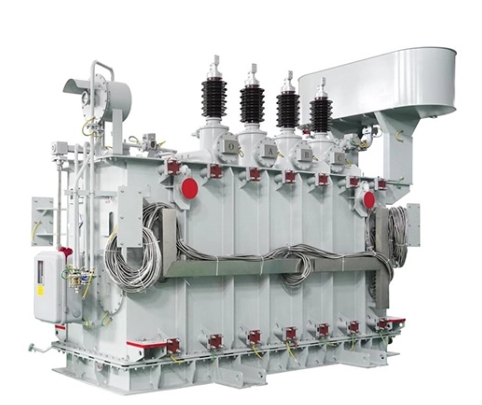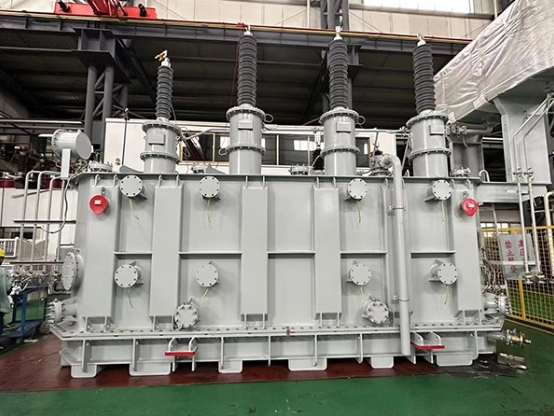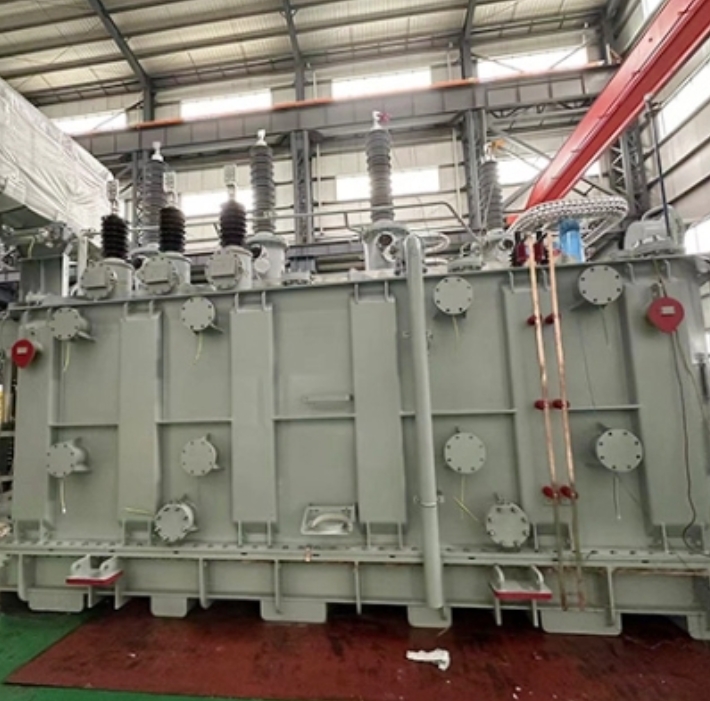

POWER TRANSFORMER-SZ-13000-115-10.5
- Home
- Product
POWER TRANSFORMER-SZ-13000-115-10.5
Yotran Wave Electric's SZ-13000/115 is a high-efficiency 13MVA power transformer designed for 115 kV/xx kV voltage conversion, compliant with IEC, IEEE, and GB standards. Key features include:
- ✔ Low-loss silicon steel core (efficiency >99%) for reduced energy waste
- ✔ ONAN/ONAF cooling ensuring stable performance under varying loads
Ideal for substations, industrial plants, and renewable energy integration, this transformer offers a 40+ year design life with customizable options (taps, bushings, protection systems). Robust construction and advanced insulation ensure reliability in demanding environments.
-
High-Efficiency Power Transformer with Low Losses
The SZ-13000-115/10.5 is a high-efficiency electrical transformer designed for step-up/step-down applications, featuring an ultra-low-loss silicon steel core. With no-load loss ≤15kW and load loss ≤70kW (GB/T 6451 standard), it achieves >99.2% efficiency, reducing operational costs by 10-15% compared to conventional models. Ideal for utilities and industrial plants seeking energy-saving power transformer suppliers.
-
Robust Cooling & Overload Capability
Equipped with ONAN/ONAF cooling, this power transformer ensures stable operation in harsh environments (-30°C to +45°C). Its smart temperature control enables 120% overload capacity for 2 hours, making it perfect for renewable energy integration. Customers looking to buy power transformer online benefit from its reliable performance.
-
Globally Certified for Safety & Compliance
Fully compliant with IEC 60076, IEEE C57.12, and GB 1094, this transformer holds UL/cUL, KEMA, and CE certifications. Its 8% short-circuit impedance and reinforced structure pass rigorous testing, ensuring a <0.3% annual failure rate. Trusted by global ODM/OEM transformer partners.
-
Flexible Customization & Fast Delivery
Tailored solutions include ±8×1.25%/±9×1.78% on-load tap changers, <65dB noise reduction, and C5-M anti-corrosion coating. With 200+ successful global deployments, we offer a 12-week lead time—contact us for a transformer price list or project-specific requirements.
| Type | Step down power transformer |
|---|---|
| Model | SZ-13000-115±9*1.78%/10.5 |
| Cooling Method | ONAN/ONAF |
| Primary Voltage | 115kV |
| Secondary Voltage | 10.5kV |
| Rated Frequency | 50HZ |
| Rated Power | 13MVA |
| Winding Material | Copper |
| Voltage Regulation | OLTC |
| Tapping Range | ±8×1.78% |
| Connection Group | YNd11 |
| Transformer Dimension | 6200×4200×5000mm |
| Weight | 33000kg |
Application Scenarios of Power Transformer:
-
Utility Substations & Grid Infrastructure
The SZ-13000-115/10.5 power transformer is ideal for 110kV/35kV substations, enabling efficient voltage conversion between transmission and distribution networks. With ONAN/ONAF cooling and >99.2% efficiency, it minimizes energy loss in grid operations. Its 8% short-circuit impedance ensures stability during peak loads, making it a reliable choice for national power grids and urban infrastructure projects. -
Renewable Energy Integration (Solar/Wind Farms)
Designed for step-up applications in renewable plants, this transformer connects 35kV wind turbines or solar arrays to 115kV grids. The 120% overload capacity handles intermittent renewable generation, while UL/cUL certification meets global green energy standards. Over 50 units are deployed in Asian and North American wind farms. -
Heavy Industrial Facilities (Mining/Metallurgy)
In mining and steel plants, the transformer’s reinforced tank (C5-M anti-corrosion coating) withstands harsh environments. The <65dB noise level complies with OSHA standards, and DGA monitoring prevents oil degradation from heavy loads. Custom ±8×1.25%/±9×1.78% taps adapt to volatile industrial demand.
Below are generic installation and use instructions for 110kV class power transformers:
-
Lifting and Jacking of Transformer Body
Always use the designated lifting lugs and follow the manufacturer’s guidelines for hoisting. Ensure the transformer is balanced and avoid sudden movements. Jacking should be performed only at specified points to prevent deformation. -
Transportation and Handling
Secure the transformer firmly during transport. Avoid excessive vibration and impact. Use appropriate equipment for loading and unloading, and always keep the transformer upright. -
Check and Acceptance
Upon arrival, inspect the transformer for physical damage, verify all accessories and documentation, and check for oil leaks. Record any discrepancies and notify the supplier if necessary. -
Storage and Keeping of Product (Body and Component)
Store the transformer in a dry, well-ventilated area. Protect from moisture, dust, and mechanical damage. Keep components in their original packaging until installation. -
Overall Reassembly on Site
Assemble all external parts and accessories according to the manufacturer’s instructions. Ensure all gaskets and seals are properly installed to prevent leaks. -
Vacuum Oil Filling
After the general assembly is fully completed, perform vacuum oil filling to remove air and moisture. Maintain the required vacuum level and fill with filtered transformer oil as specified. -
External Surface Cleaning and Painting Makeup of
Transformer
Clean all external surfaces to remove dust and contaminants. Touch up paint as needed to protect against corrosion. -
Check and Handover Test Before Commissioning
Conduct electrical and mechanical tests according to standards (such as insulation resistance, turns ratio, polarity, and functional checks). Ensure all results meet acceptance criteria before energizing. -
Operation
Operate the transformer within its rated parameters. Monitor temperature, oil level, and load regularly. Follow proper procedures for energizing and de-energizing. -
Inspection and Maintenance
Perform routine inspections for leaks, unusual noises, and overheating. Schedule periodic maintenance such as oil testing, bushing inspection, and cleaning to ensure reliable operation.








